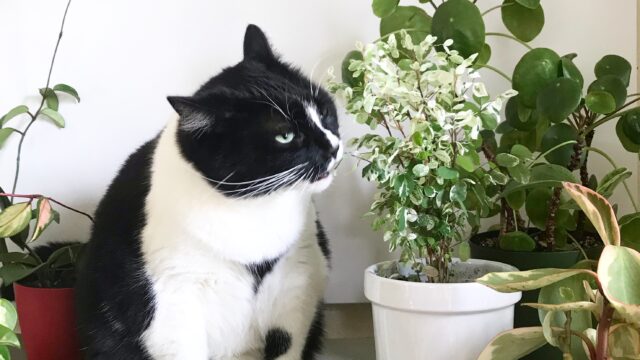
I’ve decided to conquer the main question that surrounds this blog. Over and over again, I receive comments or Instagram DMs asking why I have Monstera deliciosas (a toxic houseplant) around my cats. This is an understandable question of course, and one that, when you think about it, may contradict the point of this blog.
But does it?
It doesn’t. The point of Leaf and Paw is to educate on toxic and non-toxic houseplants and explain why they are the way they are.
So, over and over again, my response is “my cats aren’t interested in these plants” or “I keep them out of reach.” Sure, these responses answer the question but I’m pretty sure the person asking is still left wondering if it’s ok for them to mix their Monstera and new kitten together. It’s not and I’ll tell you why in a bit.
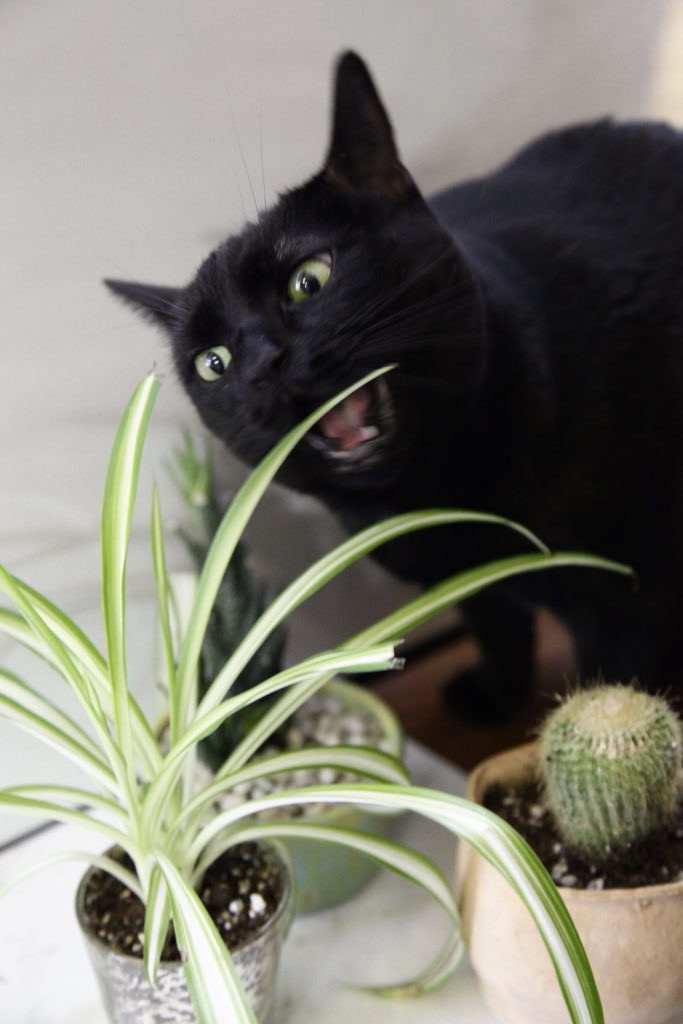
See, here’s where my blog can get sticky. I’m not a vet nor a botanist, but am a pet owner with plenty of experience in this field. My first post was about how Harlequinn ate a Dracaena plant, an experience which started this blog in the first place. Since then she has 1. learned from her mistakes and 2. made me a diligent pet parent. I learned to make sure any harmful plant is either out of her reach or I know she is uninterested in consuming it. Years later I know I can now have houseplants in my home without worry of her pillaging them. Well, except for Spider plants.
Plant toxicity is a bit complicated, but once you understand why some houseplants are toxic and why some aren’t, the question “can I keep my Monstera and new kitten in the same room” might answer itself. My goal with this post is to clear up some common questions about plant toxicity and explain why a houseplant is never “safe” for a pet, even if toxic or nontoxic.
What Makes Some Plants Toxic?
So plant toxicity is a bit tricky, but how I like to paint it is this: everything can be toxic if consumed in excess. Too much chocolate won’t make us feel good and too much of a labeled “pet safe plant” can be toxic. When we’re talking about plant toxicity in houseplants, we’re talking about some distinct chemicals that a plant possess.
Plants use these certain chemicals (they’re actually biominerals) to help with photosynthesis and organ function. When ingested or when they hit the skin (human or animal) they can cause painful problems. Plants that leave this reaction are labeled toxic, while plants that lack these abrasive chemicals are considered non toxic. At the end of the day, houseplants shouldn’t be eaten by anyone. I mean, that shouldn’t have to be said, right?
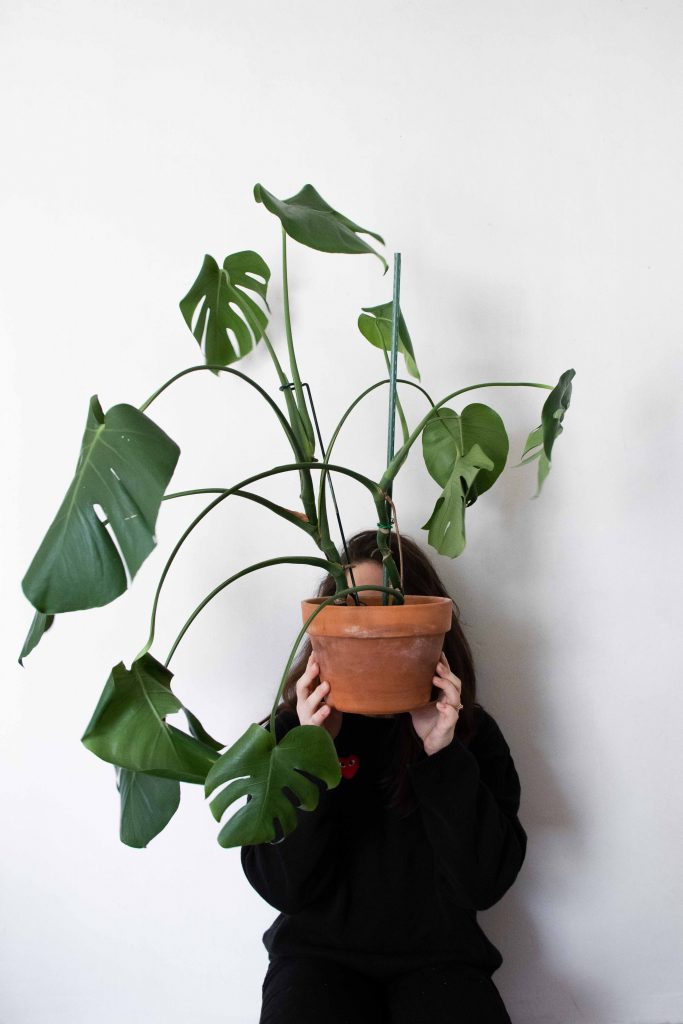
Here’s a good example: A Monstera is part of the Araceae family, which contains a ton of houseplants we bring into our homes like Philodendrons and Diffenbaccia. Plants in this family have calcium oxalate crystals, which are those chemicals mentioned above. Under a microscope, calcium oxalate crystals look like little needles. Spoiler alert, if ingested these can cause all sorts of health issues or trauma in your pet. These crystals lead to a weird stinging in the throat, stomach and all-over discomfort. Don’t eat your houseplants.
On the other hand, Peperomia (below) do not contain any biochemical that would have this same effect. Peperomia varieties are deemed a safe plant for pets but again, this doesn’t mean it should be eaten like it’s at an Atlantic City buffet.
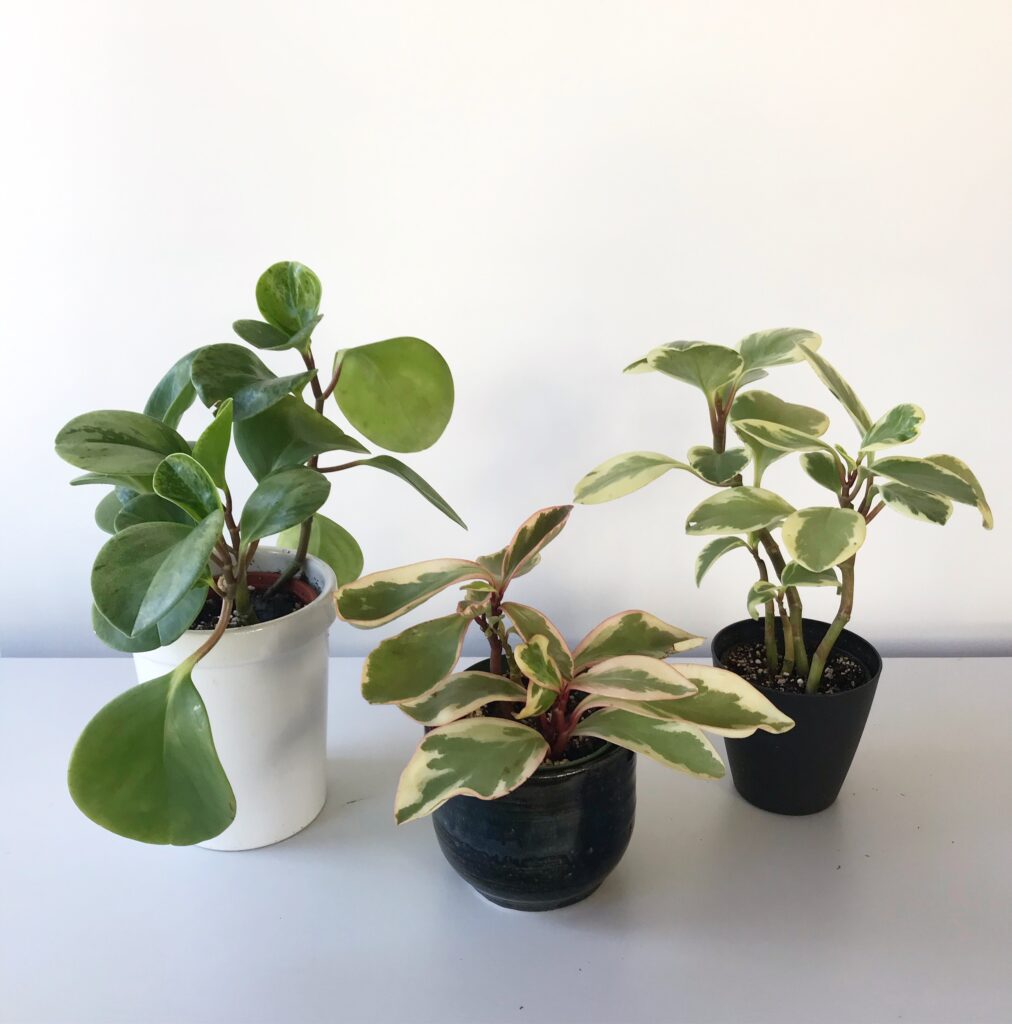
How Do I Train My Pets Not to Eat My Plants?
Naturally, the next question is this. Sure, not all pets eat houseplants, but some do. The point of learning what’s toxic and non toxic is to place houseplants accordingly to avoid any buffet eating that could have been avoided. That being said, I never rely on “training” my pet to not eat houseplants. I don’t use hacks like apple cider vinegar or put orange peel in my soil as a deterrent. Usually, pets are either interested in plants or aren’t. If you’re unsure, it’s not worth trusting them since they are animals and do things out of instinct.
Instead, I opt for rearranging my plants on shelves, carts, plant stands – anything to get them off the floor or out of the way. Also, I never have anything deathly toxic in my home. Sago palms? Nope. Cyclamen? Nope. Schefflera? Nuh-uh. It’s not worth the risk. The Monsteras and Snake plants I do have are out of reach all the time, but my cats aren’t at all interested in eating these types of plants anyway. Harlequinn sticks to nibbling Spider or Air plants and Harvey could care less.
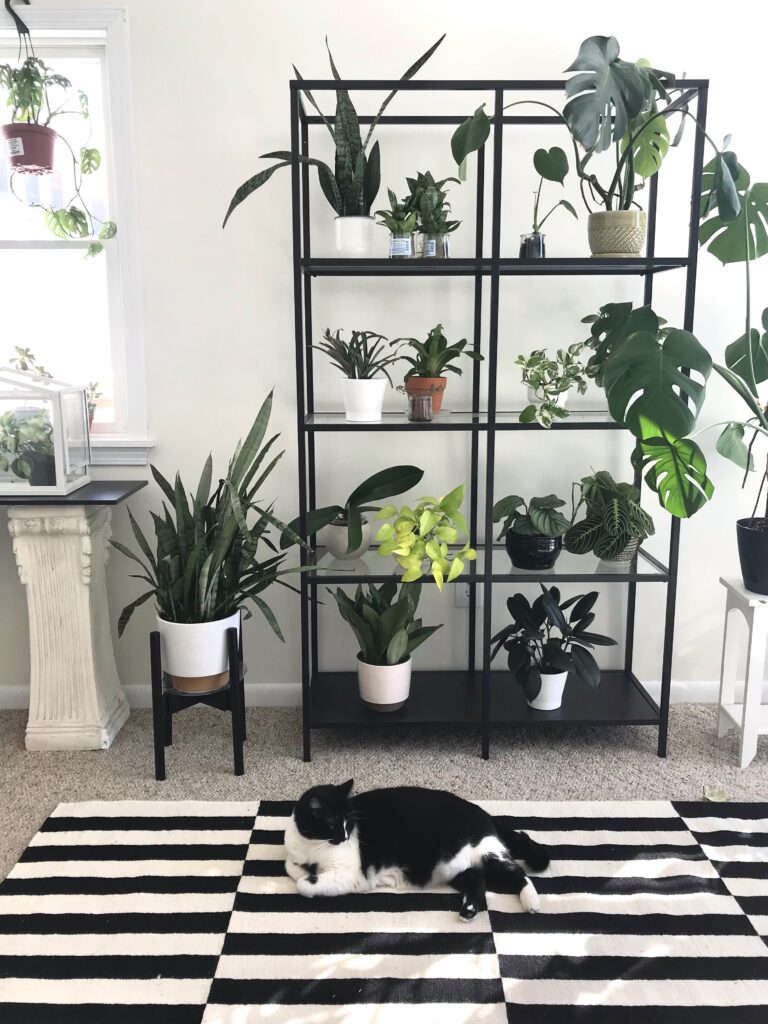
Oh no! My Pet Ate One of My Plants!
Ok, but what should you do if your pet does consume a plant? Let me tell you a story.
I was meeting with a women for a consultation about plant placement in her cat-friendly home. Once I got on the video call, the first thing she showed me was a half-eaten Monstera. Laughing she said, “Look what Fluffy* did a couple days ago!” *actual name withheld.
Calmly, I asked if Fluffy was ok and she replied with “He’s a little sluggish, barfed up some plant but seems fine.”
Even calmer, I asked if she called the vet and she said, “Nah, he really looks fine and I’m watching him…he’ll be mostly likely be ok.”
The end.
This is a PERFECT example of what you shouldn’t do when your pet eats a plant. No matter how much time has passed, if you suspect a pet ate a toxic plant, reach out to your vet. My client said Fluffy was lethargic which is a red flag to begin with. Other signs can be drooling vomiting, nervous system shut down or shaking, or no symptoms at all. The worst thing you can do is wait. From the moment you see an eaten plant, call your vet or the poison pet helpline and be sure you have the plant identified. Tell them what happened, giving as much info as you can, and follow their instructions.
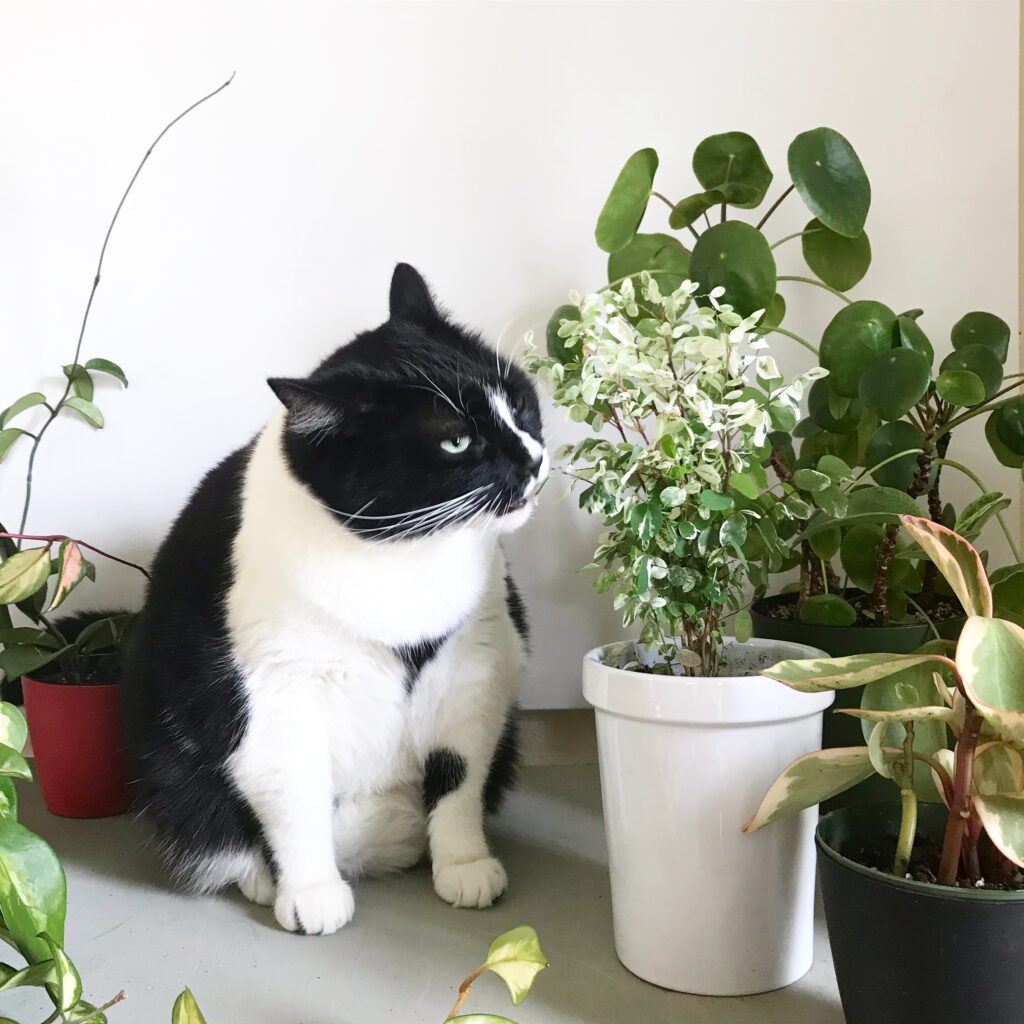
I hope this helps clear some of the air around toxic houseplants because plant toxicity is not completely black and white. Really, learning what’s toxic, why it’s toxic, and being informed is the best way you can be a pet and plant parent. I know this might be a somewhat different post but it’s an honest one. As more and more people become plant parents who are not experienced, more misinformation gets out there. Always consult your vet if you have any questions or concerns about your pet’s health. And, if it wasn’t obvious, never keep toxic plant easily in reach if you have baby animals (kittens/puppies). Thanks for coming to my TED talk.

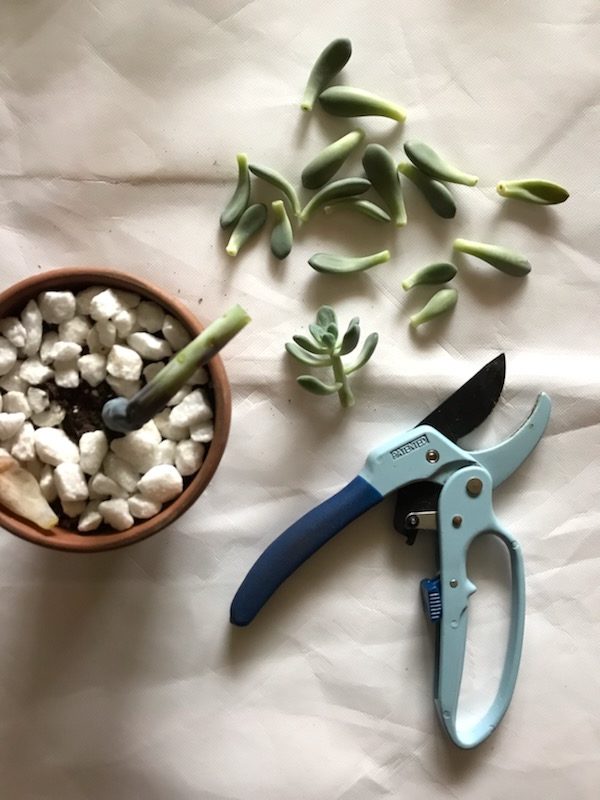
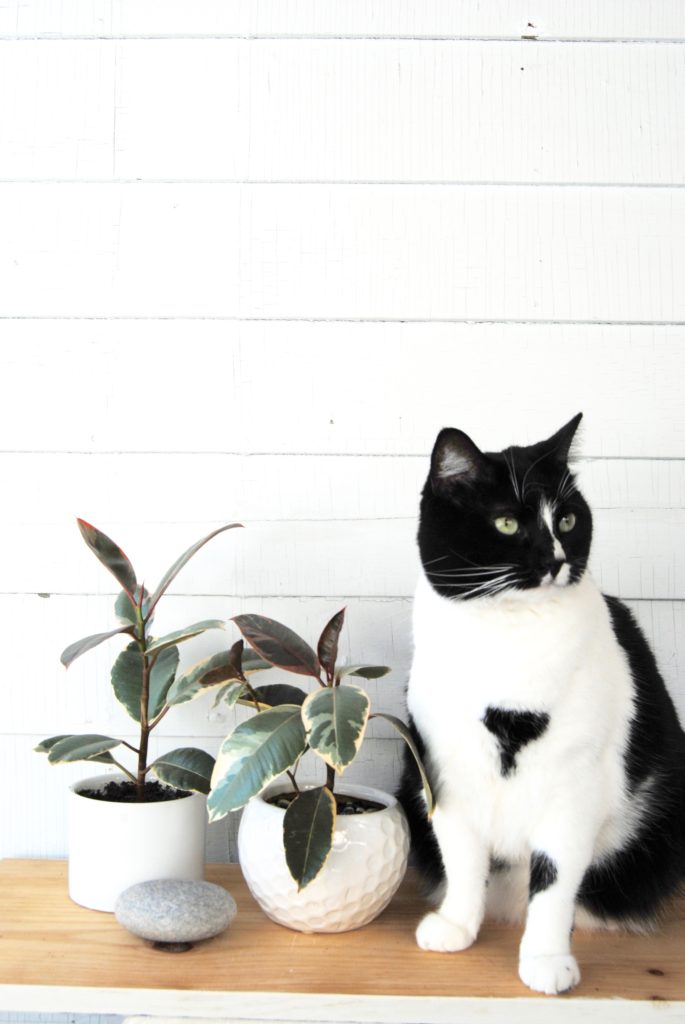
Oooo what is that var. Oxalis looking plant??
Hi Elle – I think you mean the Breynia nivosa! It’s an adorable pink and white plant that’s pet safe.
Where can I find a list of flowering outside climbers that are not toxic to cats ?
I have not found a list of just flowering climbers, but I do know that creeping phlox and petunias are considered non-toxic to cats via the ASPCA.